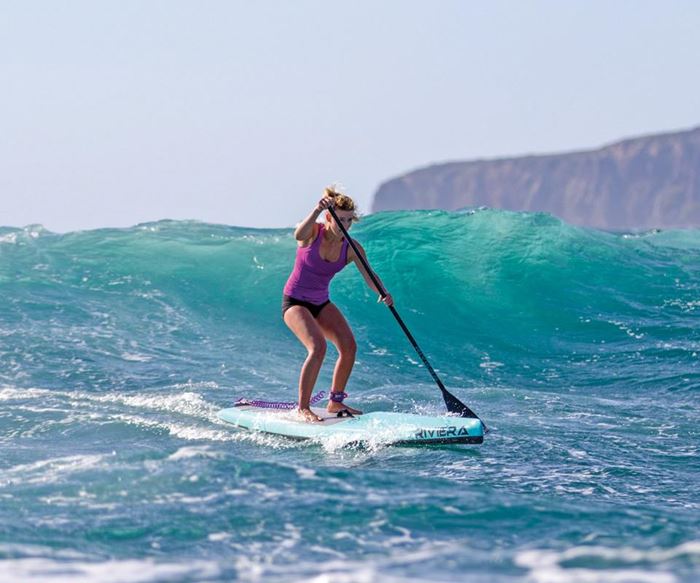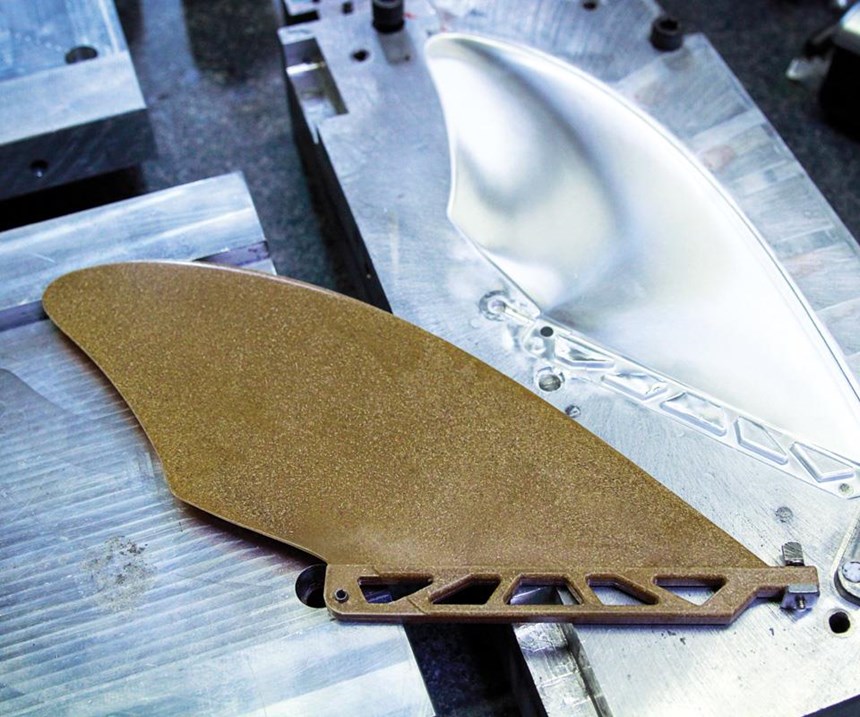Bio-composite surfboard fins
New materials trim weight, add sustainability.
Surfing equipment manufacturer Future Fins (Huntington Beach, CA,US) has a passion for surfing, and produces a wide range of surfboard fins from composites, styled for every level of ’boarder ability and performance. Although the company makes thousands of composite fins every year, it is also deeply connected to the beach and ocean. Seeing trash and plastic waste wash up on the beach was more than bothersome for Future Fins’ owners, who felt such a responsibility to protect the environment that they took aim at a new fin product that would reduce landfill waste and be as Earth-friendly as possible.
Toward that end, they collaborated with Green Dot Bioplastics (Cottonwood Falls, KS, US) to introduce a fin formed from bio-composites and bio-plastics. The key was achieving adequate stiffness for the new fin, designed for stand-up paddleboards (SUPs). Futures Fins came to Green Dot looking for an environmentally friendly material with the natural aesthetics of wood that also met the performance requirements of the engineering-grade plastics normally used for fin applications. One of Green Dot’s trademarked Terratek wood-plastic composites, a blend of reclaimed wood fibers with recycled polypropylene (PP) plastic, was the right solution.
Future Fins had tried bio-composites previously, including mushroom foam, hemp, flax, soy-based items and others. Ultimately, these materials presented molding challenges and did not meet the required performance levels. By contrast, Terratek WC100300, which blends pine wood fiber and PP at 30% wood fiber by weight (although loading can be as high as 60%, depending on customer specs), fit the bill. With a density of 1.02 g/cm3, it delivers a tensile modulus of 399,000 psi, yet has the look and feel of wood.
The injection molded RWC (reclaimed wood composite) Keel fin reportedly performs at the same level, or better than, many of the fiber-reinforced composite fins that Future Fins manufactures for SUPs, in terms of flex (stiffness), rake and flow (drag) characteristics, but at a reduced weight.
Future Fins says the material is easy to mold, and creates a fin that’s ~35% lighter than standard products of engineered plastic.
Further, the wood composite molding material can be modified by adjusting the wood species, size and concentration of wood particles in the formulation to create performance enhancements, while maintaining sustainability. Future work includes bio-composites for long-board and twin-fin surfboards, and perhaps even a short- board surfboard, where aggressive riding styles demand very high fin performance.
Related Content
-
Lighter, stronger, faster bionic hand aided by composites design
Psyonic’s touch-sensing prosthetic hand leverages bionic technology, 3D printing and a carbon fiber composite exterior for light weight, high strength and high-tech functionality.
-
Plant tour: Arris Composites, Berkeley, Calif., U.S.
The creator of Additive Molding is leveraging automation and thermoplastics to provide high-volume, high-quality, sustainable composites manufacturing services.
-
Glass fiber-reinforced Akulon RePurposed recyclate enables Ahrend sustainable office chair
Envalior 30% glass fiber-reinforced Akulon RePurposed material helps Ahrend achieve lighter task chair with closed-loop value chain and reduced emissions.















.jpg;maxWidth=300;quality=90)
